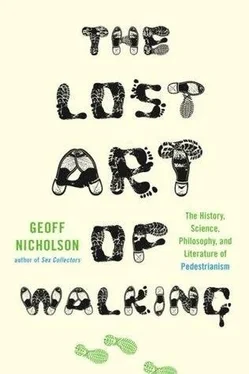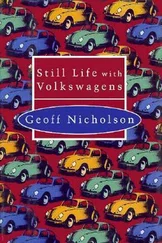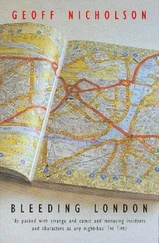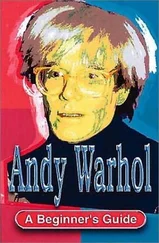I decided I’d better see the movie again. These two scenes were there, largely as I remembered them, but there were a couple of other walking scenes that I’d forgotten about. One has Stanton walking across a freeway bridge, where he encounters a madman screaming at the traffic below. He gives the screaming man a sympathetic pat on the back as he walks on.
The other scene shows Travis trying to make amends to the son he abandoned four years earlier — the boy is now eight. He asks his brother’s maid how he should walk in order to look like a ‘rich father’. She tells him he must walk with his head up, his body stiff, and with dignity. We can see that Travis isn’t quite able to pull this off, but he and the maid are happy enough with the effect.
He then meets his son after school and they walk home together, but instead of sharing the same sidewalk, they walk along on opposite sides of the street, doing little comic walking routines for each other’s amusement. It’s a scene of enormous warmth and charm. It’s hard to think of Harry Dean Stanton as a purveyor of funny walks, and that’s precisely why these walks work so well, because they belong to the character rather than the actor.
But that’s pretty much it for walking in the movie. Sure, people walk across rooms and across parking lots, but there are no more genuine walking scenes. Paris, Texas turns into what it was threatening to be all along: a road movie.
Travis buys a 1959 Ford Ranchero, and father and son drive off in search of Mom, played by Nastassja Kinski. They find her, mother and son reunite, and Travis, knowing that he’s the problem rather than the solution, drives off with an ambiguous smile on his face. It has become a Sam Shepard story of love, loss, alienation, and manly men driving alone in pickup trucks, which is to say it has become rather unsurprising.
Within the scheme of the film Travis has redeemed himself. He’s become part of something. In the beginning he was a lost, crazy man walking alone through the Texas desert. In the end he’s a sane man, integrated, driving along highways in his incredibly cool twenty-five-year-old classic Ranchero.
There is a moral here that I’m not very comfortable with. Naturally, one has sympathy for Travis. We don’t want him to be a lonely, miserable outsider, and yet I can’t see why a man driving along in a Ranchero is necessarily any better off than a man walking alone in the desert. It would have been crass for the end of the movie to have him returning to the desert on foot, yet the vision of the smiling man driving his pickup into the American night feels like too easy a resolution.
There was also something about one of those earlier scenes that worried me. In the beginning Travis walks in straight lines, without regard for topography or established paths. He doesn’t walk down any actual roads. When his brother sees him walking along the railroad tracks he stops him, peers into the distance, in the direction Travis is heading, and says, ‘What’s out there? There’s nothing out there’. It rings hollow, because there is something out there and maybe it’s something that can be better found on foot than in a pickup truck.
So what’s the answer to the question: How many roads must a man walk down before you call him a man? In an episode of The Simpsons called ‘When Grandma Simpson Returns’, Homer first says it’s eight, and then when he’s told the question is rhetorical he corrects himself and says it’s seven. Douglas Adams in The Hitchhiker’s Guide to the Galaxy says it’s forty-two. But the answer surely has to be none. A man’s still a man even if he walks down no roads at all. It’s just that he’s likely to be more interesting company if he’s walked and sung his way down a few more than that, and if he doesn’t rely too much on his pickup truck.
♦
Meanwhile, back on Madison Avenue, I walked from Marcus Garvey Park to 135th Street, where the on-ramp for the Madison Avenue Bridge starts. I then started heading west toward the subway station. For most of the time I’d been in East Harlem I hadn’t been the only white man on the street. There had been one or two others along the way. But now as I walked along 135th Street, I was certainly the only one, and apparently a rarity, rare enough for someone to shout out in my direction for the benefit of the guys he was with, ‘White man! White man!’ I wished he hadn’t, for all sorts of reasons. He wasn’t, I’m pretty sure, saying, ‘Hail fellow well met’. He was saying it more in the tone of someone who’d seen some exotic or threatened species, the way you might have called out, ‘Look, a spotted owl!’ though no doubt there was some disconnect between what he said and what he meant. In fact, I don’t really know what he meant, and I certainly didn’t know how to respond. ‘Why yes, you’re right. I am a white man, aren’t I?’ In any event I pretended not to hear.
I had some of that feeling of being in a movie, though not an especially original one. You know the kind: where the white guy strolls into the wrong part of town and terrible things happen to him. I was also reminded of a couplet from Kirsty MacColl’s song:
When you get to the corner don’t look at those freaks
Keep your head down low and stay quick on your feet, oh yeah.
I don’t know that the guy yelling at me was a freak, but I did keep my head down and continued walking at a brisk New York pace all the way to the subway entrance. And as I walked I was reminded of one last song, Lou Reed’s ‘I’m Waiting for the Man’, which asks another question: ‘Hey, white boy what you doin’ uptown?’ Walking a songline is not the answer anybody would expect or, I’m sure, accept.
6. A Man Walks Into a Bar
New York, the Shape of the City, Down Among the Psychogeographers and Mixologists
Provincial American cities evoke in me a terrible feeling of desolation as evening falls and the citizenry retires to home, hearth, peevish wife and importunate children. Whereas in Manhattan at any hour of the night one can step into the street and encounter a werewolf or at least a derelict who will vomit on one’s shoes.
— THOMAS BERGER
If anyone can claim to be ‘America’s most famous pedestrian’ it is probably Edward Payson Weston (1839–1929), always accepting that fame can be both local and transitory. He began his career in 1861 as the result of losing a bet, though no money was involved. The wager was that if Abraham Lincoln won the presidential election, Weston would walk the five hundred or so miles from Boston to Washington in ten days to get there in time for the inauguration. Lincoln won the election and Weston started walking, though he didn’t quite manage to do the walk in ten days. He was a couple of hours late and missed the inauguration ceremony, though he arrived in time to attend the ball that evening.
Weston’s walk was a grueling one. Walking fifty miles a day is no easy ride for anyone. He walked through rain and snow, was chased by dogs, was arrested once, fell down several times, and on one occasion sprained his ankle. There were compensations, however. Along the way he became a celebrity, cheered on by crowds, kissed by local girls, given free food and lodging, and he also had a sponsorship deal from the Grover & Baker Sewing Machine Company. At the inauguration ball the new president was happy to shake his hand.
Before long Weston turned pro. In 1867 he walked 1,300 miles from Portland, Maine, to Chicago in twenty-six days and won $10,000. In 1869 he walked 5,000 miles for $25,000. In 1871, in St. Louis, he walked backward for 200 miles. He spent eight years in Europe, competing against the best walkers there, and in England in 1879 he challenged ‘Blower’ Brown to walk over 500 miles, and won by covering the distance in a little under 142 hours.
Читать дальше












